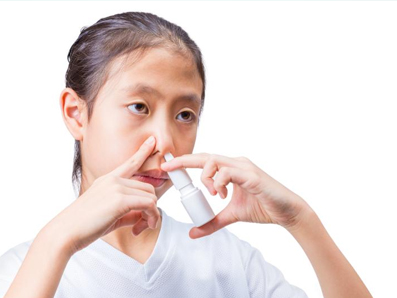
2. Nasal Glucagon Safe, Effective in Treating |

![]() A phase 3 study published in the journal Pediatric Diabetes, reports that children with T1D who experienced a moderate hypoglycemic event returned to normal status within half an hour of receiving nasal glucagon (NG) from a caregiver in a real-world setting.
A phase 3 study published in the journal Pediatric Diabetes, reports that children with T1D who experienced a moderate hypoglycemic event returned to normal status within half an hour of receiving nasal glucagon (NG) from a caregiver in a real-world setting.
![]() Glucagon, one of the first-line treatments for severe hypoglycemia, is unstable in an aqueous form, and hence is often very cumbersome, confusing and intimidating especially for non-medical caregivers to decide on the correct dose to be administered to a child based on his or her body weight.
Glucagon, one of the first-line treatments for severe hypoglycemia, is unstable in an aqueous form, and hence is often very cumbersome, confusing and intimidating especially for non-medical caregivers to decide on the correct dose to be administered to a child based on his or her body weight.
![]() Larry C. Deeb, a specialist in pediatric endocrinology at Tallahassee Memorial Healthcare, Florida, and colleagues analyzed data from 26 healthy children with T1D for at least 1 year and their caregivers. Caregivers were trained to administer 3mg NG to participating children during spontaneous, symptomatic moderate or severe hypoglycemic events at home or school and to observe the treatment response. Caregivers also noted the blood glucose levels in treated children every 15 minutes. Parents completed the Hypoglycemia Episode Questionnaire, the Nasal Score Questionnaire, and a User-Friendliness Assessment Questionnaire to assess the ease-of-use and report adverse events. Proportion of patients who awakened or returned to a normal status within 30 minutes after NG administration was determined. NG’s safety, tolerability, ease-of-use etc. were also assessed.
Larry C. Deeb, a specialist in pediatric endocrinology at Tallahassee Memorial Healthcare, Florida, and colleagues analyzed data from 26 healthy children with T1D for at least 1 year and their caregivers. Caregivers were trained to administer 3mg NG to participating children during spontaneous, symptomatic moderate or severe hypoglycemic events at home or school and to observe the treatment response. Caregivers also noted the blood glucose levels in treated children every 15 minutes. Parents completed the Hypoglycemia Episode Questionnaire, the Nasal Score Questionnaire, and a User-Friendliness Assessment Questionnaire to assess the ease-of-use and report adverse events. Proportion of patients who awakened or returned to a normal status within 30 minutes after NG administration was determined. NG’s safety, tolerability, ease-of-use etc. were also assessed.
![]() For all the 33 hypoglycemic events that occurred, patients returned to normal status within 30 minutes of NG administration. Average blood glucose level increased from 55.5 mg/dL (range, 42-70 mg/dL) at baseline to 113.7 mg/dL (range, 79-173 mg/dL) within 15 minutes of NG administration. No additional emergency health services, oral carbohydrates or injectable glucagon were required for patients.
For all the 33 hypoglycemic events that occurred, patients returned to normal status within 30 minutes of NG administration. Average blood glucose level increased from 55.5 mg/dL (range, 42-70 mg/dL) at baseline to 113.7 mg/dL (range, 79-173 mg/dL) within 15 minutes of NG administration. No additional emergency health services, oral carbohydrates or injectable glucagon were required for patients.
![]() More than 90% caregivers reported that the administration was very easy. For around 60% of events, caregivers administered NG within 30 seconds. No serious adverse events were reported. The ease of use and effectiveness of needle-free NG is a big leap and may make it a preferred treatment option for nonmedical caregivers of pediatric patients with T1D.
More than 90% caregivers reported that the administration was very easy. For around 60% of events, caregivers administered NG within 30 seconds. No serious adverse events were reported. The ease of use and effectiveness of needle-free NG is a big leap and may make it a preferred treatment option for nonmedical caregivers of pediatric patients with T1D.
![]()
For enquiries info@jothydev.net.
Please visit: jothydev.net | research.jothydev.com | diabscreenkerala.net | jothydev.com/newsletter
